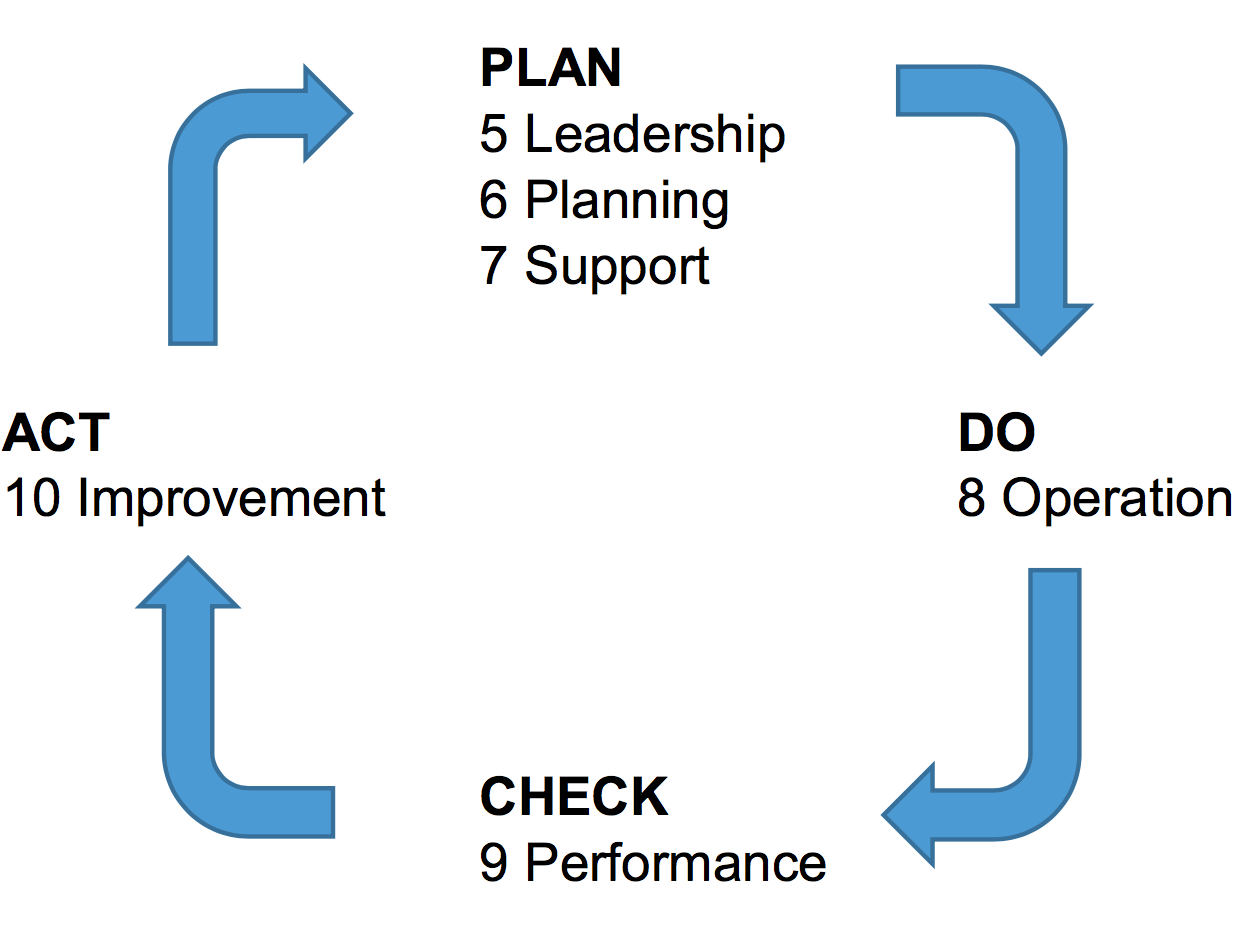- Adapt to a changing world
- Reflect the complex environments in which organizations operate
- Provide a consistent foundation for the future
- Ensure the new standard reflects the needs of all relevant interested parties
- Ensure alignment with other management system standards1
A new common clause structure has been developed. Key benefits of the common clause structure:
- All ISO management system standards will look the same with the same structure (some deviations)
- More efficient to address multiple management system requirements (e.g., ISO 9001 and ISO 14001)
- Provides the option of integrating management systems
- Standardized core definitionsIbidThe common clause structure is organized into the following ten clauses:
1 Scope
2 Normative references
3 Terms and definitions
4 Context of the organization 5 Leadership
6 Planning
7 Support
8 Operation
9 Performance
10 Improvement Ibid
 Plan – The Plan step involves identifying a goal or purpose, formulating a theory, defining success metrics and putting a plan into action.Do – The Do step is when the components of the plan are implemented, such as making the product or providing the service.
Plan – The Plan step involves identifying a goal or purpose, formulating a theory, defining success metrics and putting a plan into action.Do – The Do step is when the components of the plan are implemented, such as making the product or providing the service.
Check – The Check step, often referred to as the Study step, is where outcomes are monitored to test the validity of the plan for signs of progress and success, or problems and areas for improvement.
Act – The Act step closes the cycle, integrating the learning generated by the entire process, which can be used to adjust the goal, change methods or even reformulate a theory altogether.
These four steps of the PDCA Cycle are repeated over and over as part of a never-ending cycle of continual improvement.2
The new ISO 9001:2015 management system standard clauses can be overlaid with the PDCA cycle to work in conjunction with each other as follows: Ibid
The information presented herein broadly shows the ISO 9001:2015 system and the PDCA Cycle design to align and work together. The details are in the sub clauses. Each organization needs to adjust their quality management system to fit within the parameters of its own situation.
Bio:
Murray Gonzalez has been involved in quality management since 1990. He is a marketing manager with QualityWBT Center for Education providing online training for quality auditing, standards, and process improvement tools www.QualityWBT.com. Gonzalez holds a Master of Science in Psychology from University of West Florida with a specialization in Industrial-Organizational Psychology and an Organizational Development/Leadership certification from University of West Florida. Gonzalez is an ASQ Certified Biomedical Auditor and a Certified Six Sigma Green Belt. ©QualityWBT 2016.
REFERENCES
1 ISO 9001:2008 to ISO 9001:2015 Summary of Changes ISO/TC/176/SC 2/N1267 2 The PDSA Cycle, The W. Edwards Deming Institute 2016
MURRAY GONZALEZ is the Marketing Manager with Quality Web-Based Training Center for Education, LLC. He is an ASQ Certified Biomedical Auditor and Certified Six Sigma Green Belt. He is an active leader with the ASQ Pensacola Section.

